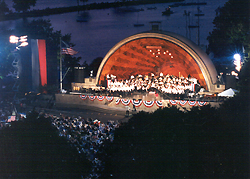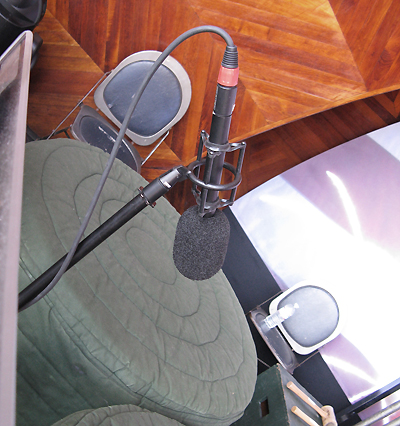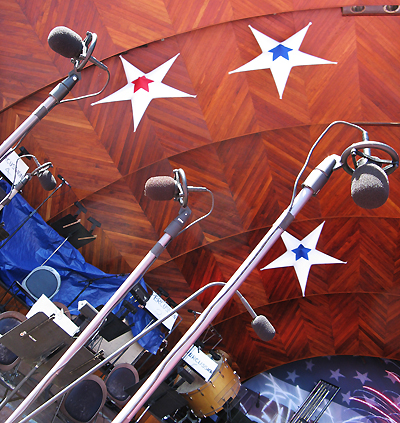
“It’s similar to mixing a band in a club,” he says. “You’re usually going to start with the lead vocal and go from there.
“It’s important and necessary to realize that the bleed from other band members into this microphone is a reality that must be incorporated into the mix.
“The same thing holds with the strings in this application.”
As he has for the past several years, Colby opted to use a variety of models from DPA Microphones.
“We’ve had great luck with the DPA line,” he says. “There are a lot of other high-end microphones that we’ve used throughout the years, but sometimes those were tough to use in the high-humidity conditions that often roll in over the city. DPA has been very dependable in these situations.”
Every string instrument in the orchestra – violins, cellos, basses and violas – was direct-mic’ed with a 4099 condenser mic from the DPA d:vote Series. The 4099, with supercardioid pattern, is very flexible, with a range of mounting options optimized for every single instrument.
Then, 14 more DPA compact cardioid mics on stands were placed throughout the section, positioned slightly above the heads of the musicians.

“Direct mic’ing produces kind of a ‘detailed signature’ sound, not as pretty, and it’s a different timbre than when sound actually hits the air,” Colby explains. “So what we’re doing is capturing both the up-close sound of the instrument and then the sound of that instrument as we would normally hear from a distance. This is how we achieve a balance between detail and warmth.”
The direct mic approach is particularly useful on pop-type numbers, which are louder in general, and in this application, further emphasized by the megaphone-like acoustical qualities of the hardwood bandshell.
Section Approach
The brass section – trumpets, trombones, bass trombone, tuba and French horns – was handled with DPA 4011 cardioid condensers on shock-mounts, with every two players sharing a mic.
Woodwinds – flutes, clarinets, bassoons, and oboes – were captured with a section approach, with basically one stand-mounted DPA 4023 condenser per section. The 4023 uses the same type of cartridge as the 4011, but is pre-amplified using a build-in ultra-small thick-film mounted FET-preamplifier.
Percussion was captured with six more DPA microphones sprinkled within the section, located closer to the more subtle instruments. “For the TV broadcast, they love to get shots of musicians hitting things that are loud or tinkly, like a triangle, so we make sure the mics are positioned to capture that sound to match the picture,” Colby states.
The vocals by the Sea Chanters U.S. Navy chorus added another interesting piece to the microphone puzzle this year. Each of the group’s 19 members was supplied with a Shure ULX-D Series wireless handheld transmitter (outfitted with KSM9 capsules), because their performance included movement and choreography.
The sonic picture is completed with two pairs of mics that serve as the foundation for the sound of the broadcast. One pair – two DPA 4061 miniature ominidirectional mics on a custom flybar – were flown above the orchestra, well out of camera sightlines. The other pair – left and right DPA 4041 large-diaphragm omni mics – were located in the audience for surround.
Colby mixes the music portions of the broadcast in the mobile unit of Baltimore-based Sheffield Audio-Video, which is outfitted with an SSL Axiom console familiar to him from several years of use. The front of house mix was performed on two 96-input Avid VENUE Profile consoles by Boston-based mix engineer Kevin Delaney, who’s also served as the system tech for Pops tours for more than 15 years.
The main sound reinforcement system, supplied by Scorpio Sound of West Bridgewater, MA, included d&b audiotechnik J Series line arrays at the stage. The numerous delay loudspeakers on towers throughout the huge coverage area were supplied and deployed by Capron Lighting and Sound of Needham, MA, which serves as the overall production contractor for the event.

